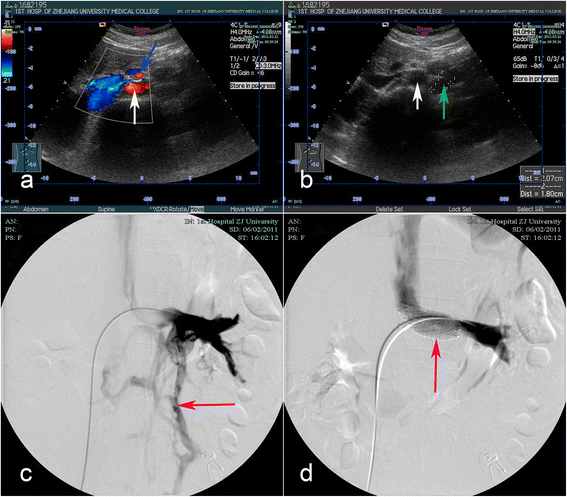Extravascular stent management for migration of left renal vein endovascular stent in nutcracker syndrome
- PMID: 26205510
- PMCID: PMC4512087
- DOI: 10.1186/s12894-015-0063-0
Extravascular stent management for migration of left renal vein endovascular stent in nutcracker syndrome
Abstract
Background: Nutcracker syndrome is an entity resulting from left renal vein compression by the aorta and the superior mesenteric artery, which leads to symptoms of hematuria or left flank pain. The alternative option of endovascular or extravascular stenting is very appealing because of the minimal invasive procedures. Stents in the renal vein can cause fibromuscular hyperplasia, proximal migration or embolization.
Case presentation: A 30-year-old female was diagnosed with nutcracker syndrome for severe left flank pain. After failed conservative approach, she underwent endovascular stenting and subsequently developed recurrent symptom for stent migration one month postoperatively. She underwent successful extravascular stenting with complete symptom resolution.
Conclusion: The extravascular stenting is an alternative option after migration of left renal vein endovascular stenting. The computed tomographic imaging was closely correlated to therapeutic interventions and stent migration.
Figures



References
Publication types
MeSH terms
LinkOut - more resources
Full Text Sources
Other Literature Sources

